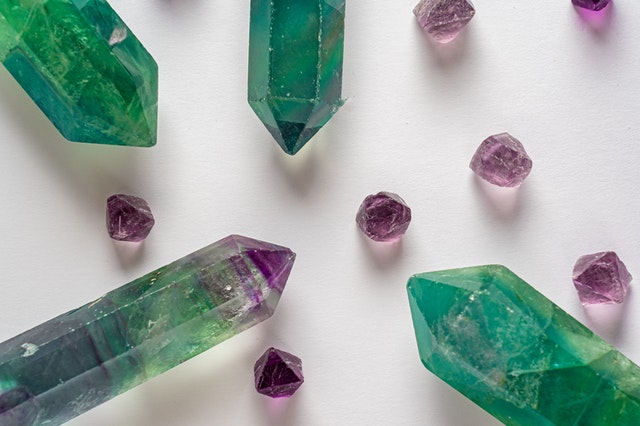The little Chinese young lady ran cheerfully down the road after her companions under the careful gaze of her affectionate grandma. Unexpectedly she staggered and bit the dust. Grandma hurried over tensely to help the crying kid, yet, tracking down no genuine mischief, she support the young lady and sent her off again to play. One inquisitive situation went to this recognizable episode: the grandma appeared to get massive fulfillment from the way that the two minimal green bangles worn by the young person, one on every wrist, had been broken unrecoverable.
Why her fulfillment? Indeed, the little trimmings were of jade, and she, when all is said and done, had made sure that the little granddaughter wore them for insurance. Surely, numerous Chinese accept that if an individual sports jade and is associated with such a mishap, the jade will be broken yet its wearer will appreciate insurance. No big surprise, at that point, that grandma noticed this clear affirmation of her notion with that "I advised you so" demeanor!
This story assists us with getting why, for the Chinese, jade is "the pith of paradise and earth," "the most valuable of valuable stones"- in any event, astounding jewels.
The Chinese came to consider jade being of otherworldly beginning, and henceforth as something that may be utilized to advance intercourse with paradise and satisfy the great forces. Generally they partner it with their five cardinal ideals: good cause, humility, mental fortitude, equity and intelligence. Rationalists instructed that jade, gulped under the correct conditions, would present the capacity to live for millennia, the force of delivering oneself imperceptible, and the capacity to fly.
There are, obviously, rare sorts of people who keep on holding to such convictions, however they do serve to show the high regard in which jade was held for quite a long time among the Orientals. However, beside the notions connecting to jade, it is, truth be told, a most excellent stone. In many pieces of southeast Asia in the event that you notice Chinese or Vietnamese women wearing their best, you will only sometimes see them without a jade decoration some place about their people.
There are two separate stones that pass by this name: nephrite, a Silicate of calcium and magnesium, and jadeite or Chinese jade, a silicate of sodium and aluminum. Curiously, that name "nephrite," from the Greek word for kidney, mirrors that ground-up jade is a solution for kidney ills. The contrast among jadeite and nephrite is truly of significance just to gatherers. Overall, jadeite is more splendid and takes a higher clean, while nephrite looks more sleek than lustrous.
Despite the fact that China has for some time been the retail shop for workmanship objects molded in jade, this material in its regular state is only occasionally found in China. It was imported from different terrains, eminently Turkestan. Yet, presently nephrite comes mostly from New Zealand, and jadeite is discovered predominantly in Japan, Burma and California. Jade is regularly found in riverbeds where it has been washed down from the mountains. It is likewise quarried from mountains, yet the Chinese have an inclination for riverbed jade.
Normally we consider jade having a brilliant spinach-green tone. Notwithstanding, it arrives in an assortment of shadings going from unadulterated white, through yellow, red, and blue to dark.
Recognizing Genuine Jade
Since there are a huge number that bear a solid likeness to jade, how might we know when we have the genuine article? In the event that you needed to purchase a piece of jade and keep away from the impersonations that are made look like veritable, the most straightforward way is have a specialist decide the inquiry. Two things specifically make jade novel: its thickness and its hardness. Its thickness or explicit gravity alludes to the proportion of its weight to an equivalent volume of water. Jadeite has a particular gravity of 3.4 or marginally less, nephrite of about 3.0. Along these lines a piece of nephrite gauging three ounces would be of a similar volume as one ounce of water.
Hardness conclusions depend on the basic rule that a harder material will scratch a gentler one, and never the other way around. Along these lines, to test a piece of jade we would require, for instance, a topaz. On the off chance that it established no connection with the stone, it should be authentic jade.
Something less difficult is to take a steel penknife or pin and scratch or prick the stone. It is difficult to establish any connection with the genuine jade thusly, yet most impersonations, like soapstone, would be stamped. Obviously, it isn't fitting to go around unpredictably scratching or pricking others' craft objects. Assuming, in any case, you truly have motivation to apply this test, there is regularly a subtle spot, say, at the back or on the foundation of an item, where you can give it a shot, and on the off chance that it is authentic jade no mischief should be possible. Glass, likewise, can be blessed to receive look a lot of like jade, yet a piece of glass would weigh impressively not exactly jade of a similar mass.
The cost of jade changes massively. More is included than simply the characteristic worth of a piece. Shading, shape, quality and particularly age and history assume significant parts. In 1960 a piece of cut Chinese jade was sold at closeout for more than $16,000. In 1860 a British undertaking to Peking fired the Emperor's Summer Palace and carted away large numbers of his superb jades. In the event that one sees an item today set apart "from the Summer Palace, Peking," one can be guaranteed of phenomenal quality, if the tag is coming clean.
Costs differ all throughout the planet, as well. In Hong Kong a jade can be gotten for just $4. However, in Europe and America greater costs typically win. A preeminent jade maker of Hong Kong is cited as saying that if a stone is excessively dim, say, greenery green, or excessively light, with much yellow color, that is the indication of a sub-par stone. The quality jade, said he, is rich green, energetic, with a ton of sparkle in it. It should not be mottled; rather, practically clear.
The Working of Jade
The working of jade is a long, moderate, arduous assignment one at which the Chinese are the recognized bosses. In one Peking workshop specialists worked ceaselessly day and night in movements and still required numerous years to finish one piece. For two centuries at any rate their strategies have proceeded unaltered. In any case, how would they approach the work?
The primary thing we should think about the matter is that jade isn't cut. Maybe, it is penetrated and ground. Stones of jade are cut into bits of reasonable size through a saw. As a result of the hardness of jade its surface should be kept continually covered with a saturated grating of some material harder than itself. Along these lines, indeed, the grating does the cutting and not the saw.
Stones are sawn first from the top, and afterward from the base, yet such is the expertise of the laborers that where the two cuts combine is basically undetectable. Starting here the technique to be utilized relies upon the article being made. Openings are made with a crude, hand-worked precious stone drill. An empty steel tube is utilized for forming within jars; rough and water are again presented and the cylinder is pivoted until the ideal profundity is reached. At that point the undesirable area down the focal point of the jar is given a brilliant tap to make it leave away. In the event that an unseen imperfection in the jade makes the middle trunk break shy of the ideal spot, the stump remaining should be penetrated away.
A few jars are molded with an idea about the side, and from this handle another ring of jade may hang, looking rather like a hoop on a pierced ear. That ring was initially one piece with the jar and was penetrated away by the expert until it hung free. Whole chains of such rings are here and there produced using one stone.
Bowls are burrowed out by making a progression of equal, vertical chops near one another down into the strong piece of jade, leaving a progression of raised leaves that are then chipped away. The bowl is done by being ground with molded plates of steel and the standard grating. Last finishing is refined with rotating circles of wood or calfskin and an extraordinary powder.
Employments of Jade
A piece of greenish-white jade weighing 640 pounds having been brought into Peking, Emperor Ch'ien Lung requested it to be molded into a portrayal of a mountain scene. The work was finished in 1874-a lovely show-stopper, a mountain with streams, trees, structures, bamboo forests, inhabited with abstract researchers of the fourth century. Significantly bigger scenes were recreated by the Peking skilled workers. Notwithstanding, this specific one might be seen by Westerners, for it currently remains in the Walker Art Gallery, Minneapolis-most likely the biggest part of worked jade in the United States.
Incalculable different articles have been molded out of jade-seats, beds, cushions, screens, chopsticks, tea kettles, plates, books (with composing engraved in gold on jade plaques covered with brocade and put away in sandalwood boxes), sculptures of Buddha and other conspicuous people, blossoms, brushes, chessmen, fans, toys, opium pipes and different things of adornments. At one time jade was even utilized for making instruments, however the approach of metal made for more powerful devices.

